Proper fit is essential for cycling performance and comfort. This guide helps you measure feet, understand sizing factors, and choose the right cycling shoes for optimal riding experience.
Understanding the Importance of Proper Fit
A proper fit in cycling shoes is crucial for both comfort and performance. Ill-fitting shoes can lead to discomfort, pain, and even long-term injuries such as numbness or hotspots. Cycling shoes are designed to provide a snug fit to ensure efficient energy transfer and control while pedaling. A shoe that is too tight can restrict blood flow, while one that is too loose may cause blisters or lack of support. Proper fit also enhances stability and power transfer, allowing cyclists to maintain optimal performance during rides. Additionally, a well-fitting shoe reduces the risk of foot fatigue, enabling riders to enjoy longer and more enjoyable cycling sessions. Ensuring the right fit is essential for maximizing both comfort and efficiency on the bike.
Why Cycling Shoe Sizing is Different from Regular Shoes
Cycling shoe sizing differs from regular shoes due to their specialized design and purpose. Cycling shoes are built for performance, requiring a snug, precise fit to maximize energy transfer and control. In contrast, regular shoes often prioritize comfort and casual wear, allowing for a looser fit. The stiff soles in cycling shoes minimize flex, which demands a more accurate fit to prevent discomfort. Additionally, cycling shoes are typically narrower and designed to accommodate cleats, further distinguishing their sizing from everyday footwear. The unique shape and structure of cycling shoes mean that traditional shoe sizing may not directly apply, making it essential to follow specific cycling shoe size charts for an optimal fit.
How to Measure Your Feet for Cycling Shoes
Place your foot on paper, mark the heel and longest toe, and measure the length and width using a ruler. Measure both feet for accuracy.
Materials Needed for Accurate Measurement
To measure your feet accurately for cycling shoes, you will need:

- A flat, sturdy piece of paper large enough to fit your foot.
- A pencil or marker to mark the outline of your foot.
- A ruler or measuring tape to record precise measurements.
- A clipboard to hold the paper steady while marking.
- Optional: a digital caliper for measuring foot width.
Ensure the paper is placed on a hard, flat surface. Stand upright and distribute your weight evenly on both feet during measurement. Measure both feet, as they may differ slightly. Use the longest and widest measurements to determine your shoe size. If unsure, consider consulting a professional fitter or using a sizing guide for assistance.
Measuring Foot Length: Step-by-Step Guide
To accurately measure your foot length for cycling shoes, follow these steps:
- Place your foot on a flat, sturdy piece of paper, keeping your weight evenly distributed.
- Mark the back of your heel and the tip of your longest toe with a pencil.
- Use a ruler or measuring tape to measure the distance between these two marks in millimeters or inches.
- Record the measurement for both feet, as they may differ slightly.
Ensure the paper is on a hard surface to avoid distortion. Stand upright to maintain natural foot positioning. Measure the longest part of your foot, as this determines your shoe size. If your measurement falls between sizes, consider rounding up for a more comfortable fit.
Measuring Foot Width: Ensuring Comfort and Support
Measuring foot width is crucial for ensuring a comfortable and supportive fit in cycling shoes. To do this accurately:
- Stand on a flat surface with your feet shoulder-width apart.
- Wrap a flexible measuring tape or a piece of string around the widest part of your foot, typically just below the toes.
- Gently press the tape to ensure it’s snug but not tight, then mark the measurement in millimeters or inches.
- Repeat for both feet, as one may be slightly wider than the other.
Foot width determines the shoe’s comfort and support. Cycling shoes often come in standard, wide, or narrow options. If your width falls between sizes, consider the next size up for a better fit. Proper width ensures reduced pressure points and improved performance during rides.
How to Account for Foot Swelling During Rides
Foot swelling during rides is common due to increased blood flow and friction. To ensure a comfortable fit:
- Measure your feet in the evening, as they tend to swell throughout the day.
- Leave about 1-2 cm of space between your longest toe and the shoe’s end to accommodate swelling.
- Consider shoes with adjustable closures, like BOA dials or straps, to tighten or loosen as needed.
- Wear thin, breathable socks to reduce moisture buildup, which can contribute to swelling.
Ignoring foot swelling can lead to discomfort, numbness, or even poor performance. By accounting for it, you ensure a snug yet comfortable fit throughout your ride.

Factors Influencing Cycling Shoe Size
Foot shape, brand-specific sizing, and cycling discipline impact shoe fit. Personal preference also plays a role in ensuring comfort and performance during rides.
Foot Shape and Its Impact on Shoe Fit
Your foot shape significantly affects cycling shoe fit. Riders with narrower feet may prefer slim designs, while those with wider feet need more spacious options. High arches or flat feet require specific support features. Proper fit prevents discomfort and enhances performance. Different brands cater to various foot shapes, so trying shoes on is crucial for finding the best match. Ensuring your foot shape aligns with the shoe’s design improves comfort and efficiency during rides.
Differences in Sizing Between Brands
Cycling shoe sizing varies significantly between brands, making it essential to consult specific size charts. While some brands offer a consistent fit, others may differ by up to one full size. This discrepancy arises from differences in shoe lasts, materials, and design philosophies. For example, brands like Sidi and Shimano may have distinct fits due to their unique manufacturing approaches. Riders should not assume their usual size will translate across brands. To avoid mismatches, always refer to the brand’s size chart and consider trying shoes on before purchasing. This variability highlights the importance of careful measurement and brand-specific guidance to ensure optimal fit and performance.
How Cycling Discipline Affects Shoe Size
Different cycling disciplines require varying levels of support and flexibility, impacting shoe size choices. Road cycling often demands snug, lightweight shoes for efficiency, sometimes necessitating a smaller size. Mountain biking, with its rough terrain, may require a slightly roomier fit for comfort during long rides. Triathlon shoes, designed for quick transitions, often feature a more relaxed fit to accommodate swollen feet post-run. Track cycling, focusing on power and precision, may lean towards tighter fits for optimal energy transfer. Each discipline’s unique demands mean riders should adjust their sizing preferences accordingly. Consulting brand-specific guides tailored to their cycling style ensures the best fit, enhancing performance and comfort across different riding conditions and terrains. This tailored approach is crucial for maximizing both efficiency and enjoyment in any cycling pursuit.

The Role of Personal Preference in Sizing
Personal preference plays a significant role in cycling shoe sizing, as comfort and performance are deeply subjective. Some riders prioritize a snug fit for optimal power transfer, while others prefer a bit more room for comfort, especially on long rides. Foot shape, width, and individual tolerance for tightness influence these choices. For example, riders with wider feet may opt for a roomier shoe, even if it means sacrificing some efficiency. Additionally, personal preference extends to how much tightness or looseness is acceptable around the heel and toes. While sizing charts provide a baseline, ultimate comfort and satisfaction depend on how well the shoe aligns with the rider’s unique needs and preferences. This emphasizes the importance of trying shoes on and considering personal comfort alongside technical requirements for the best cycling experience.
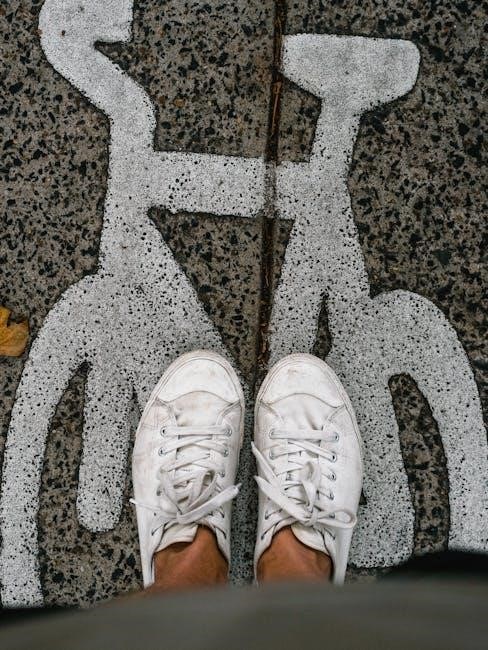
Cycling Shoe Size Charts and Conversion
Cycling shoe size charts help convert measurements to shoe sizes, ensuring proper fit. EU and US sizes differ, so accurate measurement and conversion are essential for comfort and performance.
Understanding EU vs. US Size Conversions
EU and US shoe sizes differ significantly, with EU sizes typically being 1.5 to 2 sizes larger than US sizes. For example, a US size 10 corresponds to an EU size 43-44. This discrepancy arises because EU sizes are measured in centimeters, while US sizes are based on the Brannock device. Cycling shoes often follow this sizing pattern, but may fit snugly due to their design. To ensure accuracy, refer to a conversion chart or brand-specific size guides, as some brands may vary slightly. Proper conversion is crucial for comfort and performance, especially in cycling where a precise fit is essential.
Using a Size Chart for Men’s Cycling Shoes
To ensure the best fit, use a men’s cycling shoe size chart specific to the brand and model. Measure your foot length in centimeters and add 5mm for comfort. Compare this measurement to the chart, which typically lists sizes in both EU and US standards. For example, a 27cm foot length corresponds to a EU size 43 or US size 9. Some brands, like Pearl Izumi or Shimano, provide detailed charts to match foot length to shoe size accurately. Pay attention to width options, as some brands offer narrow, standard, or wide fits. Personal preference for snugness or roominess should also guide your choice. Always refer to the manufacturer’s guidelines, as sizing can vary slightly between brands and models.
Using a Size Chart for Women’s Cycling Shoes
Women’s cycling shoe sizing varies slightly from men’s, so using a size chart specific to women’s models is crucial. Measure your foot length in centimeters and add 5mm for comfort. Compare this to the EU or US size options listed on the chart. For instance, a 23cm foot length typically corresponds to a EU size 37 or US size 6. Brands like Pearl Izumi and Sidi offer detailed charts to ensure accurate sizing. Consider foot width, as some brands provide narrow or wide options. Personal preference for snugness or roominess should guide your choice. Always refer to the manufacturer’s guidelines, as women’s sizes can differ significantly between brands. This ensures the best fit for comfort and performance during rides.
How to Convert Measurements to Shoe Size
Converting foot measurements to cycling shoe size requires precise calculation. Start by measuring your foot length in centimeters and add 5mm to ensure comfort. For example, a 24cm foot length becomes 24.5cm. Next, compare this measurement to the brand’s size chart, as sizing can vary. Use the EU or US size that aligns with your adjusted length. Consider foot width to avoid tightness or excessive room. If your measurement falls between sizes, opt for the larger size for comfort. Some brands offer width options, so check availability. Always refer to the specific size chart provided by the manufacturer, as conversions may differ slightly between brands. Accurate conversion ensures a proper fit, enhancing comfort and performance during rides. Use this method to find your ideal cycling shoe size and enjoy optimal support and efficiency on the road or trail.
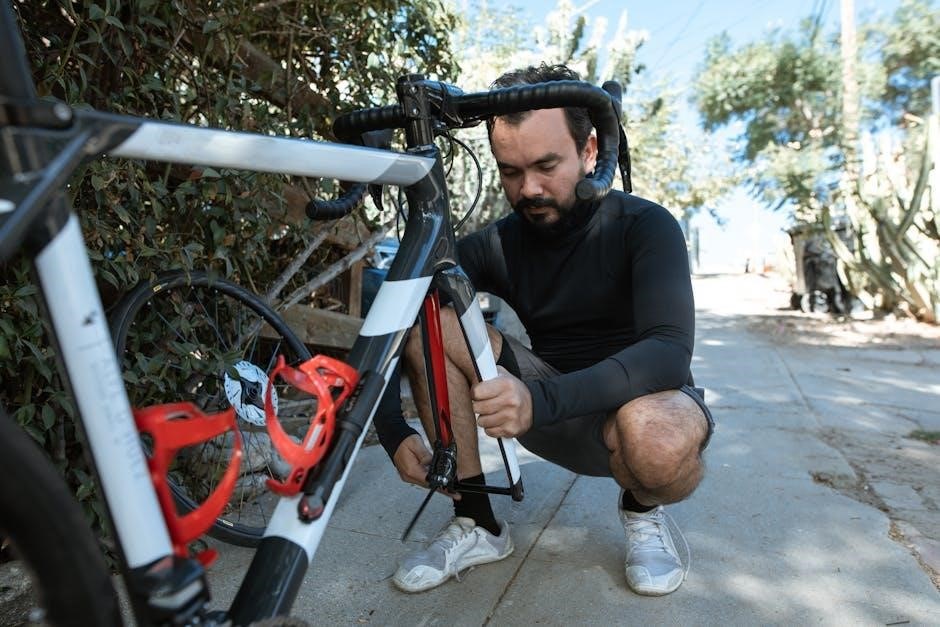
Common Mistakes in Choosing Cycling Shoe Size
Common mistakes include buying shoes too tight or too loose, not considering foot volume and width, ignoring brand-specific sizing differences, and not trying shoes on before purchase.
Buying Shoes Too Tight or Too Loose
One of the most common mistakes when choosing cycling shoes is buying them too tight or too loose. Proper fit is crucial for comfort and performance, as ill-fitting shoes can lead to discomfort, reduced power transfer, and even health issues like numbness or blisters during long rides. Shoes that are too tight can restrict circulation and cause pain, while shoes that are too loose may allow excessive foot movement, leading to inefficiency and potential hotspots. It’s important to strike the right balance: cycling shoes should feel snug but not constricting, providing adequate support without compromising circulation. Many cyclists opt for a slightly roomier fit to accommodate foot swelling during extended rides, ensuring sustained comfort and performance.

Not Considering Foot Volume and Width
One common mistake when selecting cycling shoes is neglecting to account for foot volume and width. While foot length is often the primary focus, the overall shape of the foot plays a significant role in achieving a comfortable and efficient fit. Feet come in various shapes and sizes, with some having higher arches, wider toe boxes, or greater volume. Cycling shoes are designed with different widths and volumes in mind, so failing to consider these factors can lead to discomfort, poor performance, or even health issues like numbness or blisters. For instance, a shoe that is too narrow for a wide foot can cause pressure points, while a shoe with too much volume may allow excessive foot movement. Always ensure the shoe matches both the length and the natural width of your foot for optimal comfort and support during rides.
Ignoring Brand-Specific Sizing Differences
One major oversight when choosing cycling shoes is disregarding brand-specific sizing variations. While a rider might be accustomed to a particular size in one brand, sizes can differ significantly between manufacturers due to unique lasts and design philosophies. For example, a size 42 in one brand might fit similarly to a 41 or 43 in another. This discrepancy arises because brands use different molds and materials, affecting how the shoe conforms to the foot. Failing to account for these differences can result in shoes that are either too tight or too loose, compromising comfort and performance. Always consult the specific size chart provided by the brand and read reviews to ensure the best fit, as relying solely on a standard size can lead to disappointment and the need for exchanges or returns.
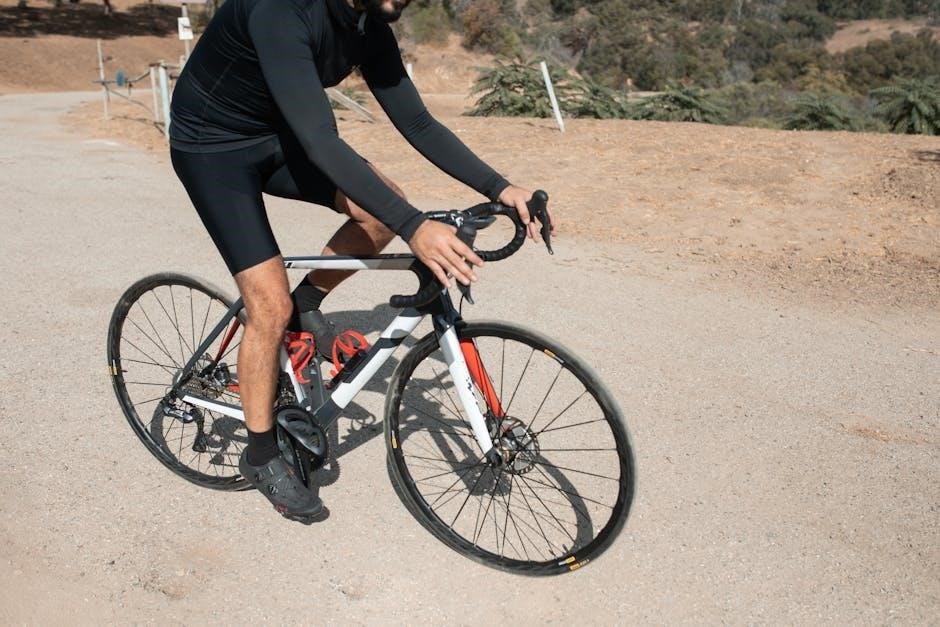
Not Trying Shoes On Before Purchase
Not trying shoes on before buying is a common mistake that can lead to discomfort and poor performance. Cycling shoes are designed to fit snugly, and even small discrepancies in fit can cause issues during rides. Foot shape, arch height, and personal comfort preferences vary widely, and what feels right in a picture or description may not match real-life experience. Additionally, brands often have unique sizing and fit characteristics, making it crucial to test shoes in person. While online shopping offers convenience, visiting a store to try shoes ensures a proper fit and reduces the risk of needing exchanges or returns. If buying online, read reviews and check return policies to mitigate potential sizing issues. Remember, ill-fitting shoes can lead to discomfort, numbness, or even performance limitations, making the extra effort to try them on worthwhile for long-term satisfaction and riding efficiency.
Brand-Specific Sizing Guides
Each brand offers unique sizing charts tailored to their shoe designs, ensuring proper fit for road, mountain, or indoor cycling needs, with specific lasts and widths.
Sidi Cycling Shoes Size Chart
Sidi cycling shoes are renowned for their precise fit and high-quality craftsmanship. Their size chart typically ranges from EU 36 to EU 50, catering to both men and women. To ensure the best fit, measure your foot length in millimeters and compare it to Sidi’s chart. For example, a 270mm foot length corresponds to a size 42. Sidi shoes often feature adjustable closures, allowing for a customizable fit. When using their chart, consider adding 3-5mm to your measured length for comfort. Sidi’s sizing tends to run true, but some riders prefer a slightly looser fit for long rides. Always consult the official Sidi website or authorized dealers for the most accurate size chart. Proper fit is crucial for performance and comfort, especially during extended cycling sessions. If unsure, visit a professional fitter or try shoes on before purchase.
Shimano Cycling Shoes Size Chart
Shimano cycling shoes offer a comprehensive size chart to ensure a precise fit for all riders. Their sizes range from EU 36 to EU 50, accommodating various foot lengths; For accurate sizing, measure your foot from heel to toe in millimeters. For instance, a 240mm foot corresponds to a Shimano size 39. The chart often includes both EU and US sizes for easy conversion. Shimano shoes are known for their snug yet comfortable fit, so consider adding 3-5mm to your measurement for optimal comfort during rides. Variations may exist between models, such as road or mountain bike shoes, so check the specific chart for your shoe type. Shimano’s sizing is generally consistent, but trying shoes on before purchase is recommended for the best fit. Always refer to Shimano’s official size chart or consult a professional fitter for personalized advice.
Pearl Izumi Cycling Shoes Size Chart
Pearl Izumi offers a detailed size chart for their cycling shoes, ensuring riders can find their perfect fit. The chart typically ranges from EU sizes 36 to 50, corresponding to US sizes 4 to 15. To use the chart effectively, measure your foot length in millimeters and compare it to Pearl Izumi’s size conversions. For example, a foot length of 240mm aligns with a size 39. Pearl Izumi shoes are known for their precise fit, so it’s recommended to add 3-5mm to your foot length for comfort. The chart also provides width options, catering to different foot shapes. When ordering, consider whether you prefer a snug or slightly roomier fit, as Pearl Izumi shoes are designed to be responsive and supportive. Always refer to the official Pearl Izumi size chart for the most accurate sizing, and if unsure, consult their customer support for guidance.
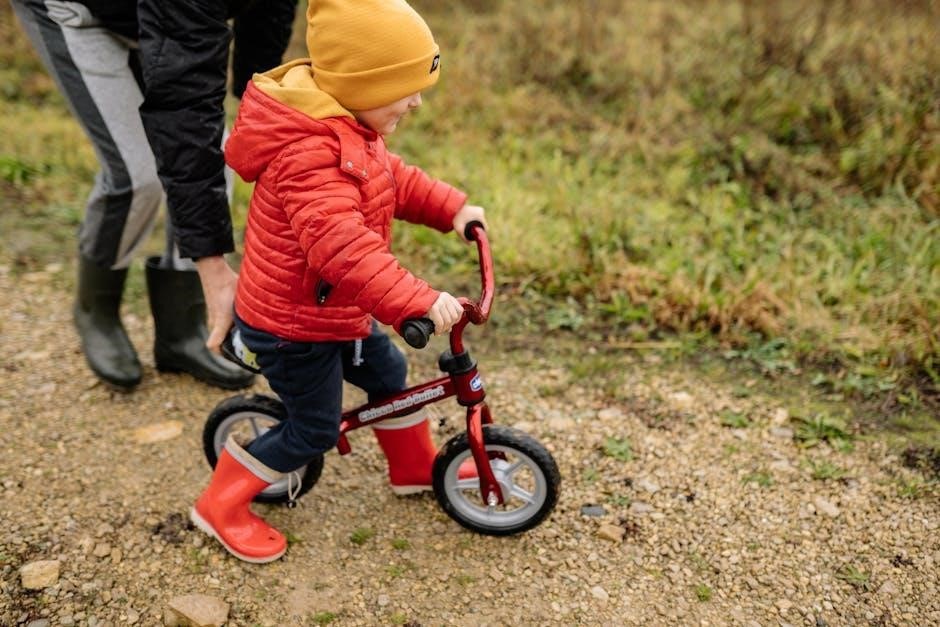
Specialized Cycling Shoes Size Chart
Specialized provides a comprehensive size chart for their cycling shoes, designed to help riders find the perfect fit. The chart typically includes EU sizes ranging from 36 to 50, which correspond to US sizes 4 to 15. To use the chart effectively, measure your foot length in millimeters and compare it to the size conversions provided by Specialized. For example, a foot length of 240mm generally aligns with a size 39. Specialized shoes are known for their precise fit, so it’s recommended to add 3-5mm to your foot length for comfort. The chart also offers width options, catering to different foot shapes and preferences. When selecting a size, consider whether you prefer a snug fit for performance or a slightly roomier feel for comfort. Always refer to the official Specialized size chart for accurate sizing, and if unsure, consult their customer support or visit a local dealer for guidance.
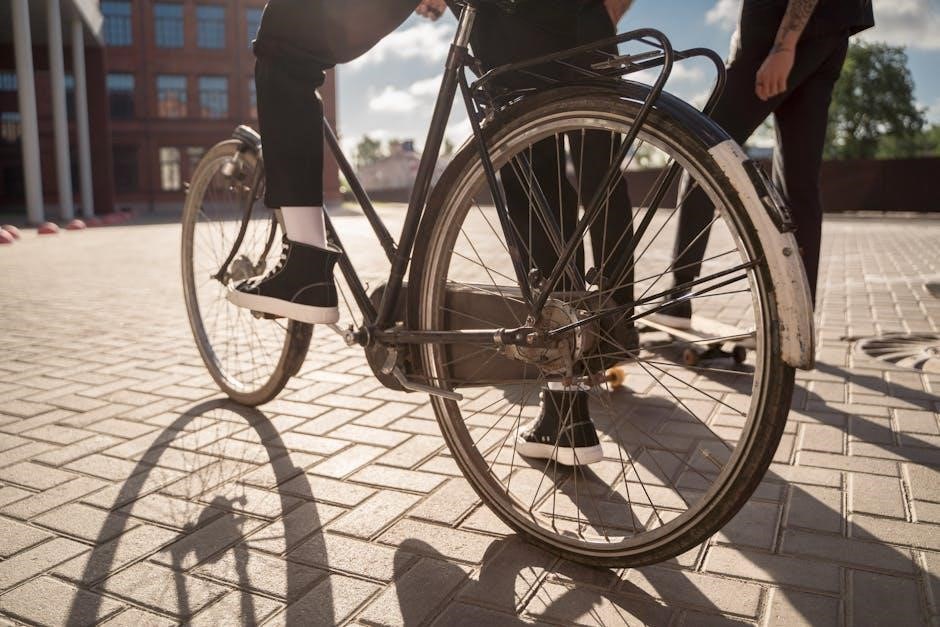
Tips for Buying Cycling Shoes Online
Check reviews for sizing insights, use detailed size charts, and understand return policies. Compare measurements across brands to ensure the best fit for your cycling needs.
How to Use Reviews for Sizing Insights
Reading reviews from other cyclists can provide valuable sizing insights. Look for comments on how shoes fit compared to the size chart, especially if they run true to size or if sizing up or down is recommended. Pay attention to mentions of comfort, toe room, and heel fit, as these can indicate how the shoe accommodates different foot shapes. Some reviewers may note if the shoes feel too tight or too loose, which can help you gauge your own sizing needs. Additionally, check if multiple reviewers consistently highlight specific fit issues, such as narrow widths or long toe boxes. While reviews are subjective, they offer real-world perspectives to help you make a more informed decision. Use this feedback alongside size charts to find the best fit for your cycling shoes.
Understanding Return and Exchange Policies
When buying cycling shoes online, understanding return and exchange policies is crucial. Look for retailers that offer flexible return windows, typically 30 to 60 days, allowing time to test the fit. Ensure the shoes can be returned in their original condition with all packaging intact. Some brands may charge a restocking fee, while others offer free exchanges. Check if return shipping costs are covered or reimbursed. A good policy should accommodate sizing adjustments without extra charges. Before purchasing, review the policy to understand any restrictions, such as final sales or customized products. This ensures you can find the perfect fit without financial risk. A clear return policy provides peace of mind, especially when ordering online without trying shoes on first.
Comparing Sizes Across Different Brands
Different cycling shoe brands often have varying sizing standards, making direct comparisons challenging. While some brands may align closely with your regular shoe size, others might differ significantly. For example, a size 42 in Sidi might fit differently than a size 42 in Shimano. This variation is due to differences in shoe last shapes, materials, and intended use. To ensure the best fit, it’s crucial to consult each brand’s specific size chart. Additionally, factors like foot shape and cycling discipline can influence sizing preferences. For instance, road cycling shoes may fit snugger than mountain biking shoes. When shopping across brands, consider reviewing customer feedback and sizing guides to make informed decisions. This approach helps you find the optimal fit, regardless of the brand’s sizing nuances.
The Importance of Reading Product Descriptions
Reading product descriptions is crucial when selecting cycling shoes, as they provide detailed insights into fit, features, and sizing. Descriptions often highlight specific design elements, such as toe box width, arch support, and closure systems, which can significantly impact comfort and performance. Additionally, many descriptions include information about the shoe’s intended use, such as road biking, mountain biking, or indoor cycling, which can help you choose the right model. Some brands also include sizing tips, like whether their shoes run true to size or if they recommend sizing up or down. By thoroughly reviewing these details, you can make more informed decisions and reduce the likelihood of needing returns or exchanges. This step is especially important when shopping online, where you can’t try shoes on before purchasing.
